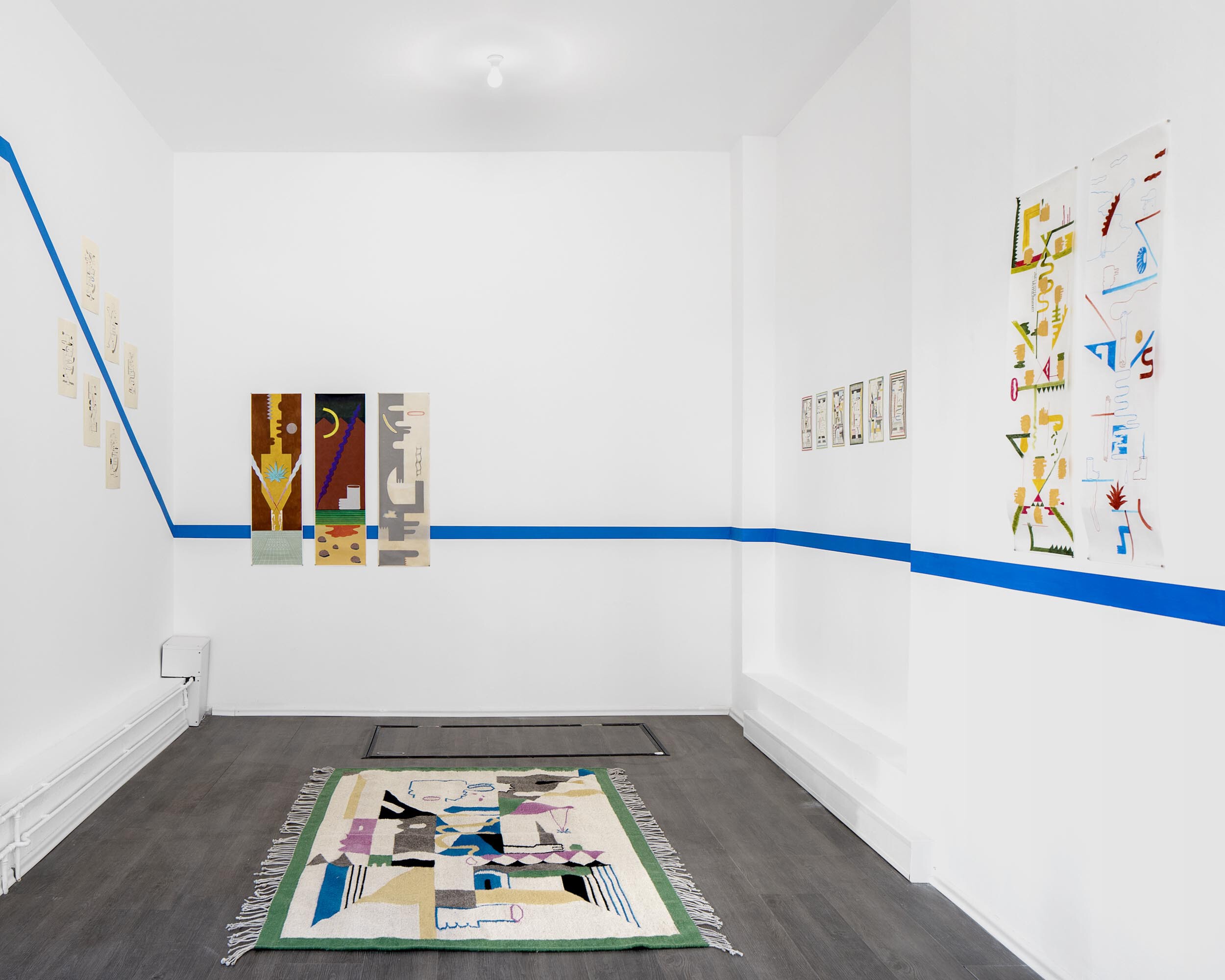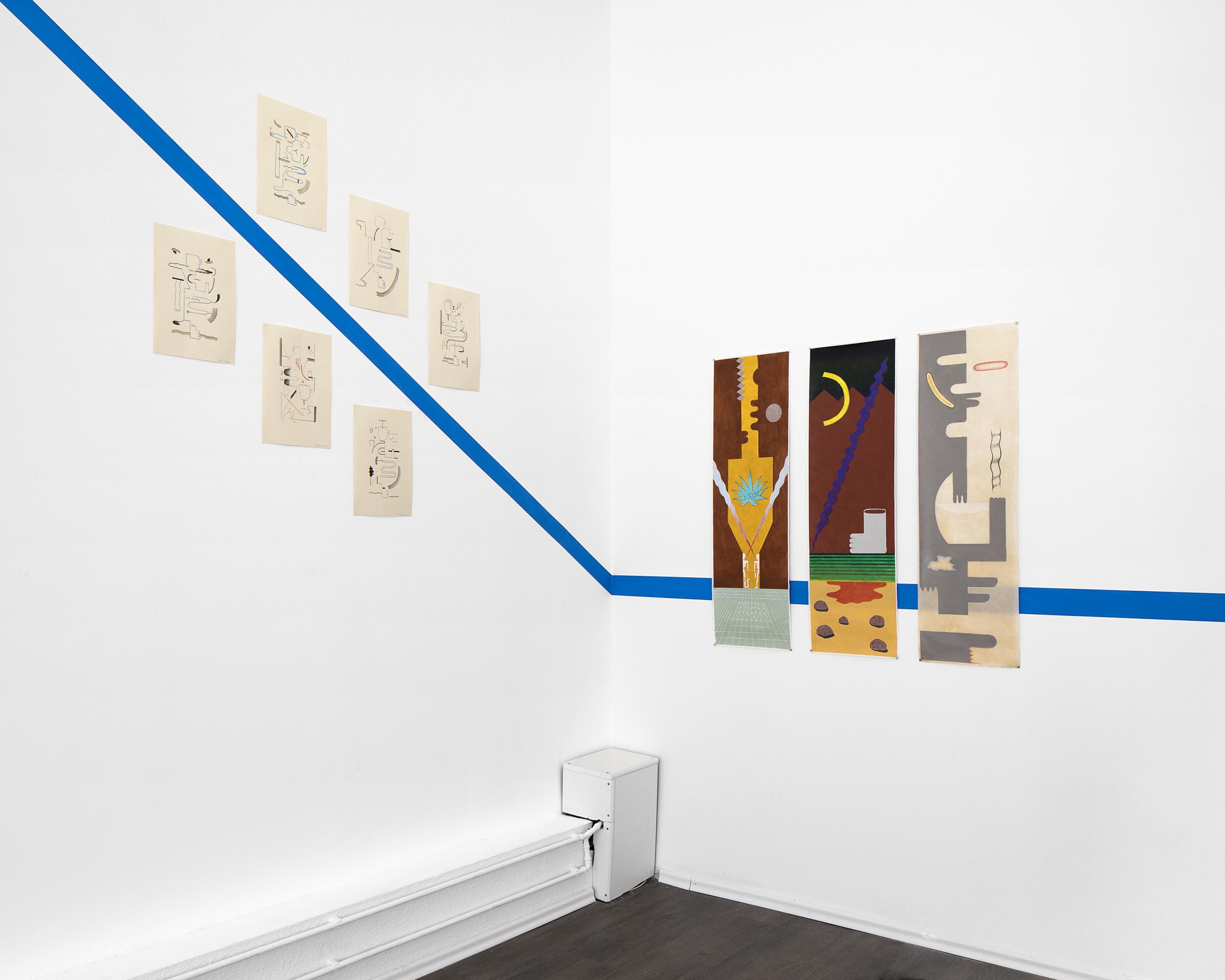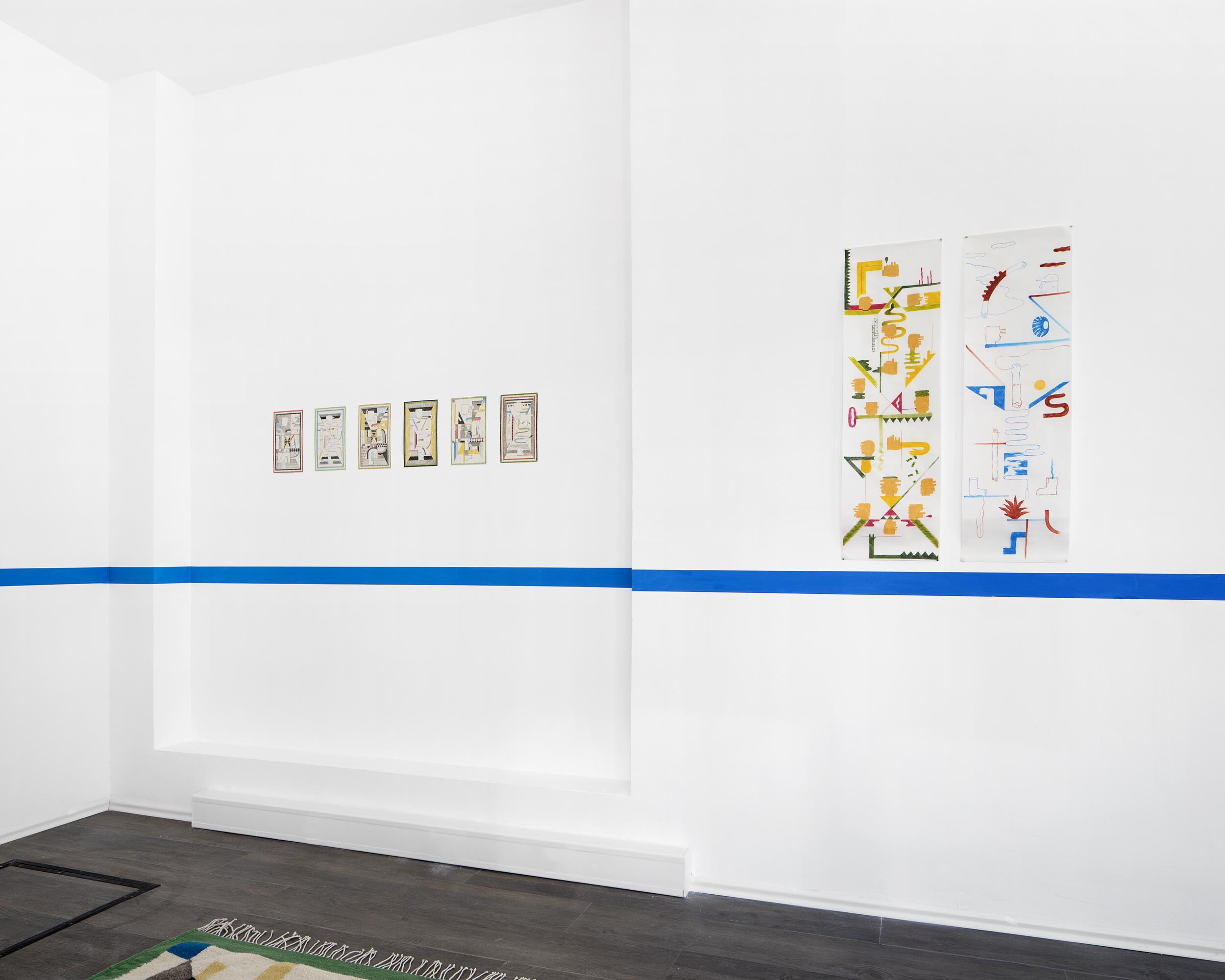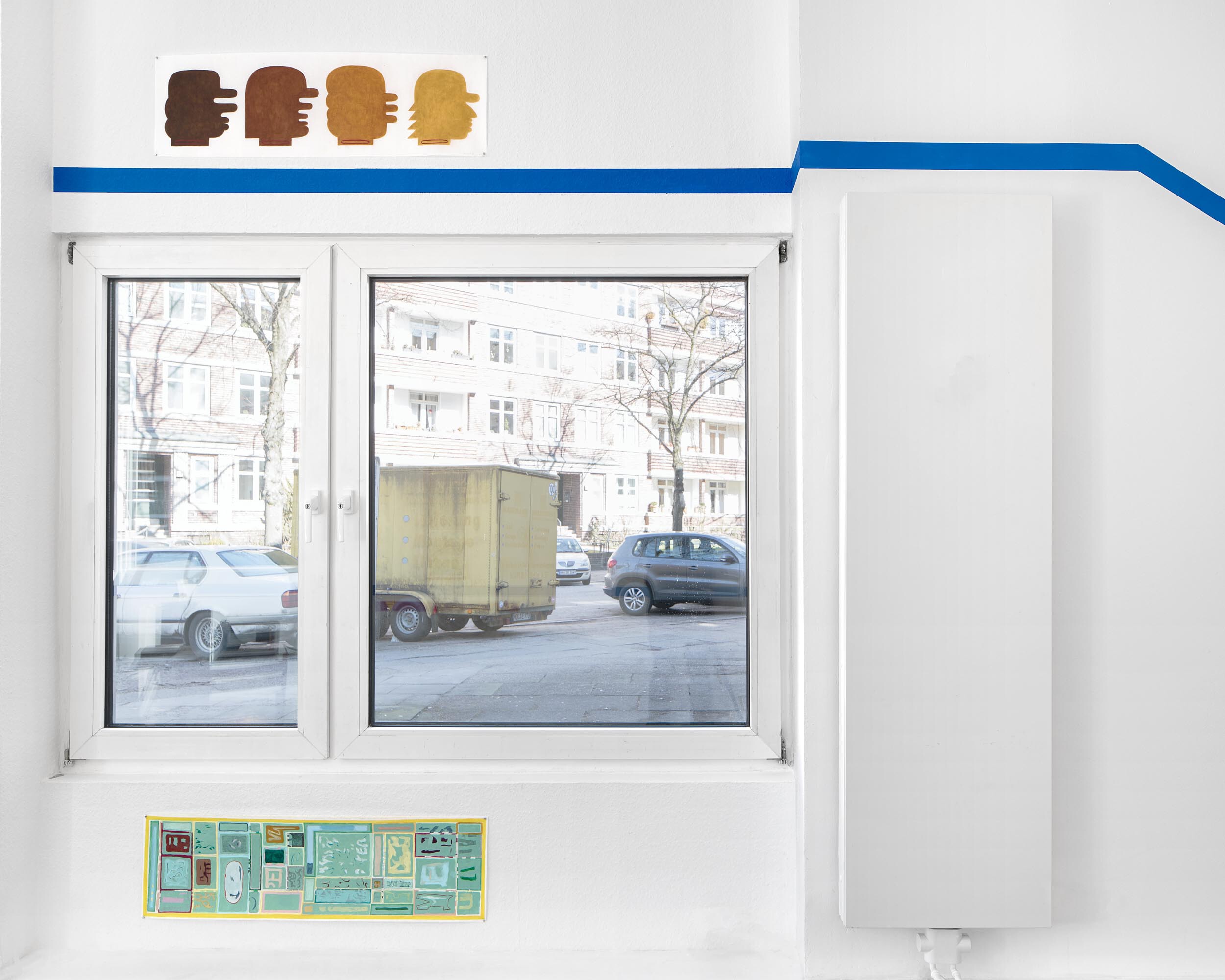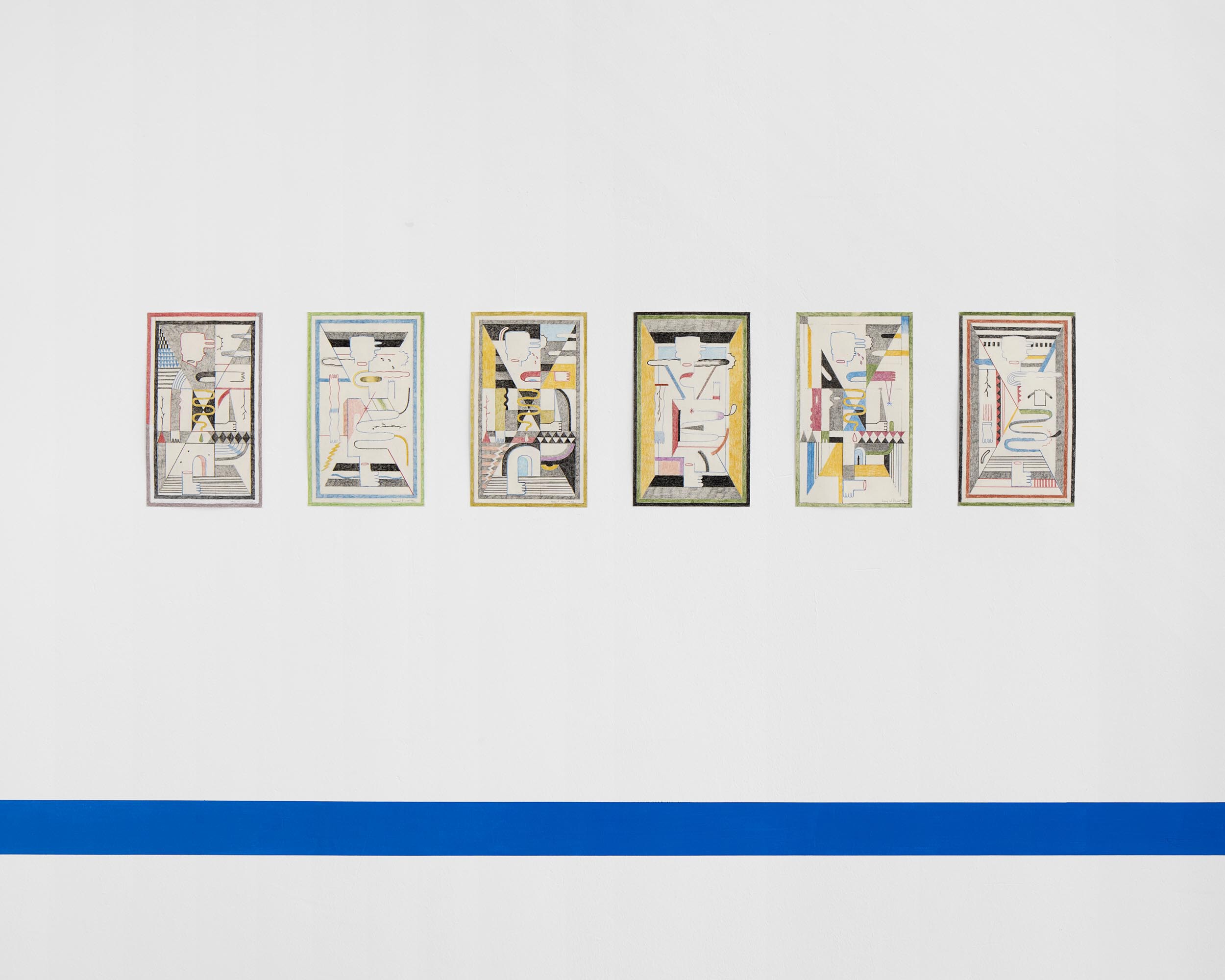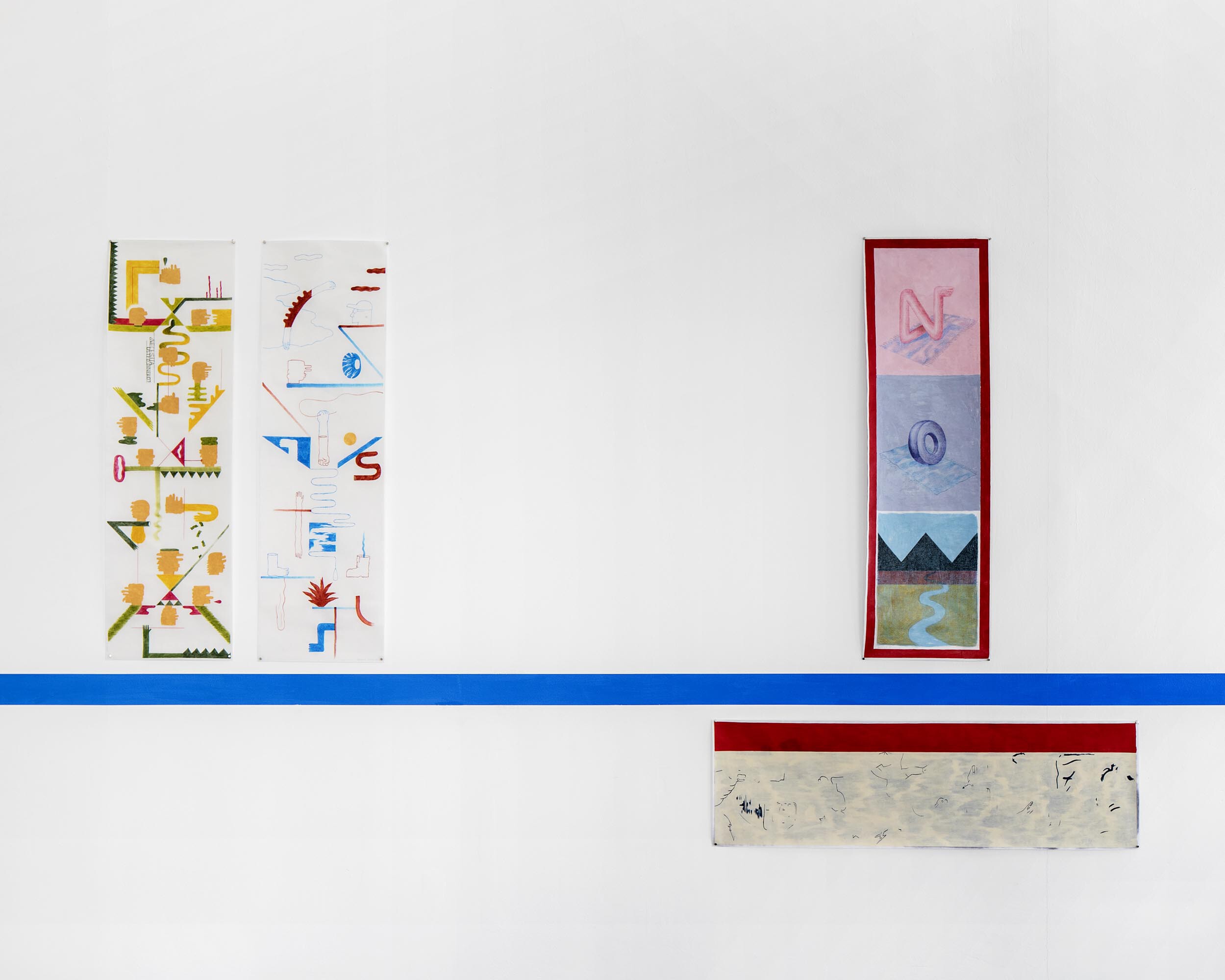The walls of the towns are living paintings where, hand-painted amateur signs, graffiti, language, corporate symbols, political propaganda and the past of time share place together. -Bayrol Jiménez-
For the exhibition Sombras de los valles (shadows of the valleys) Jiménez reviews, recycles and reinterprets popular hand-painted signs and language that ornament small shops, familiar groceries and large billboards throughout Mexico. Commercial storefronts covered in hand-rendered figures, symbols and letters have become indispensable when broadcasting the cultural identity of the Mexican landscape. Apart from their commercial function, signs have an all-important role mainly in the rural areas: they express Mexican culture and how this is represented visually. Not only do they add colour, authenticity and joy to the landscape, but more importantly, they give people a sense of where they are - culturally, politically and geographically. In smaller towns where signs are still traditionally hand-painted and not digitally produced like in commercial centres, visual diversity is preserved in layers of colours, symbols and words often applied directly to the wall. For Bayrol Jiménez the ever-changing landscape of signs is a powerful tool that communicates cultural and socio-poitical information. His ink drawings deal with and preserve every day life imagery and scenes of the working life. The abstraction in Jiménez works refers to the way in which the partly amateurish looking wall paintings often blend found images from the Internet with ones own imagination. In Sombras de los valles, Jiménez brings together consumption idolatry and recycling material in a traditionally artisan woven wool rug. On the one hand, the rug stands for the deep Mexican belief in an afterlife, which eases the grief that comes after loss. On the other hand, the rug stands for the inevitability of globalization that has reached the small villages and towns. Teotilán del Valle is the center of Mexican weaving tradition and one of many indigenous communities in the state of Oaxaca that still has a strong tradition of artisanal work with wool. For the exhibited rug, natural dyes from plants, minerals and insects were used. Thus, the rug itself becomes a portrayal and reflection of how ancient traditions merge with today's global world-view and dynamic. The drawings, paintings and the wool rug are devoted to a landscape of shadows with the colours of life.
